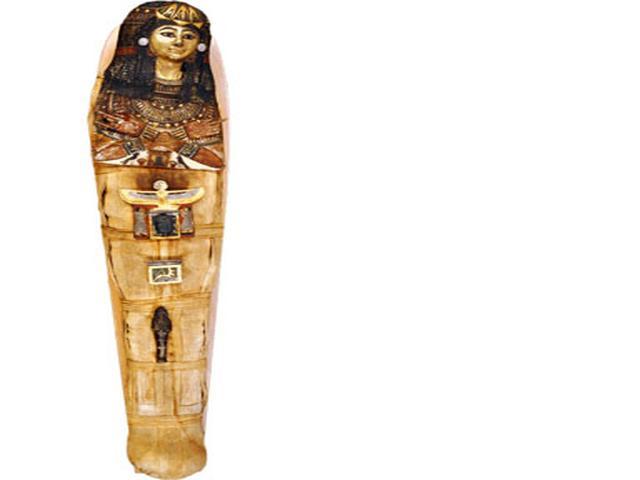Mummy of Katebet

The Mummy of Katebet is a fascinating and captivating piece that offers a glimpse into the ancient Egyptian practice of mummification. As you stand before this well-preserved mummy, you can't help but feel a sense of awe and wonder at the intricate details that have been carefully preserved over centuries. The mummy's crossed hands and enigmatic gaze draw you in, inviting you to explore the rich history and culture that surrounds this remarkable artifact.
The 'Chantress of Amun', as Katebet was known in her lifetime, holds a special place in the museum's Egyptian collection. Her golden mask, elaborate wig, and royal finger rings speak to her high status and importance in ancient Egyptian society. The dark scarab placed near her body symbolizes protection in the afterlife, while the small mummy-shaped statue, or shabti, hints at the tasks she would be expected to perform in the next world.
The process of mummification, as revealed by modern scientific techniques, sheds light on the meticulous care and attention to detail that went into preparing Katebet for her journey to the afterlife. The removal of internal organs, the drying and filling of the body with natron salt, and the wrapping in linen strips all speak to the ancient Egyptians' beliefs in the preservation of the body for eternity. Despite her advanced age at the time of her death, Katebet's mummy remains remarkably well-preserved, offering researchers and visitors alike a rare opportunity to study and appreciate the art of mummification.
The use of advanced scanning technology by the British Museum has allowed for a deeper understanding of Katebet's mummy without causing any harm to the delicate remains. The revelation that she retained two teeth and her brain was left intact, contrary to common mummification practices, adds another layer of mystery to this already intriguing figure. As you explore the details of Katebet's mummy, you can't help but marvel at the skill and craftsmanship of the ancient Egyptians who created such elaborate and enduring works of art.
In conclusion, the Mummy of Katebet stands as a testament to the rich cultural heritage of ancient Egypt and the enduring legacy of its funerary practices. As you immerse yourself in the history and symbolism of this remarkable artifact, you can't help but be transported back in time to a world where life and death were intricately intertwined, and the journey to the afterlife was carefully guided by tradition and belief.
© ChatGPT 3.5